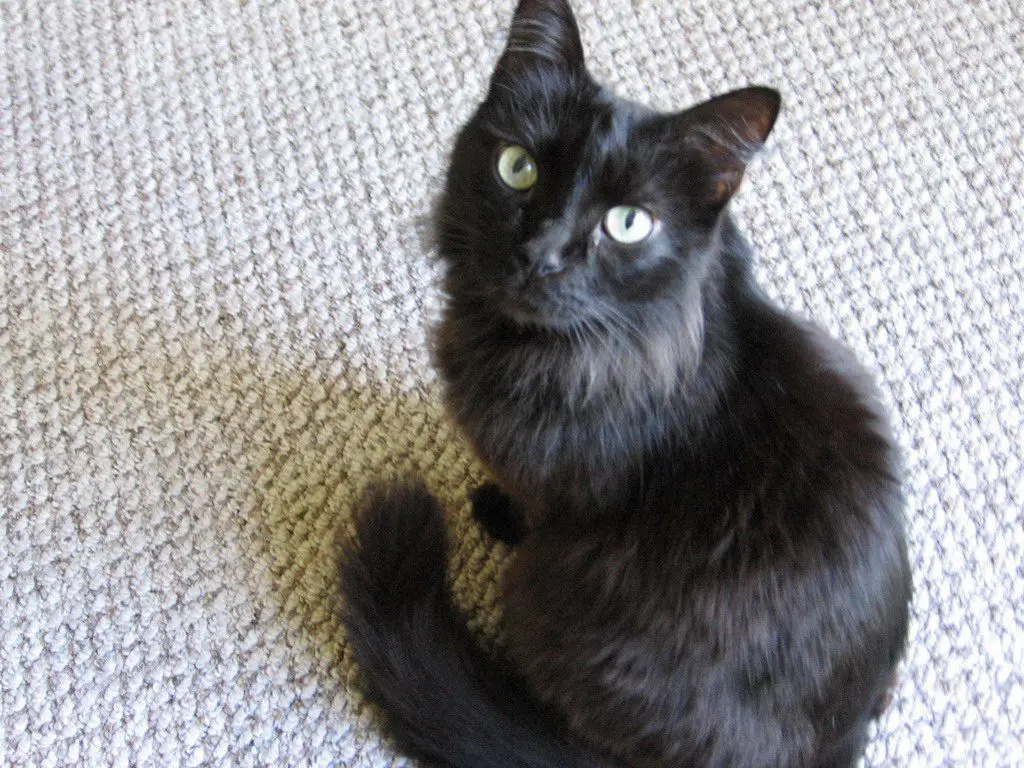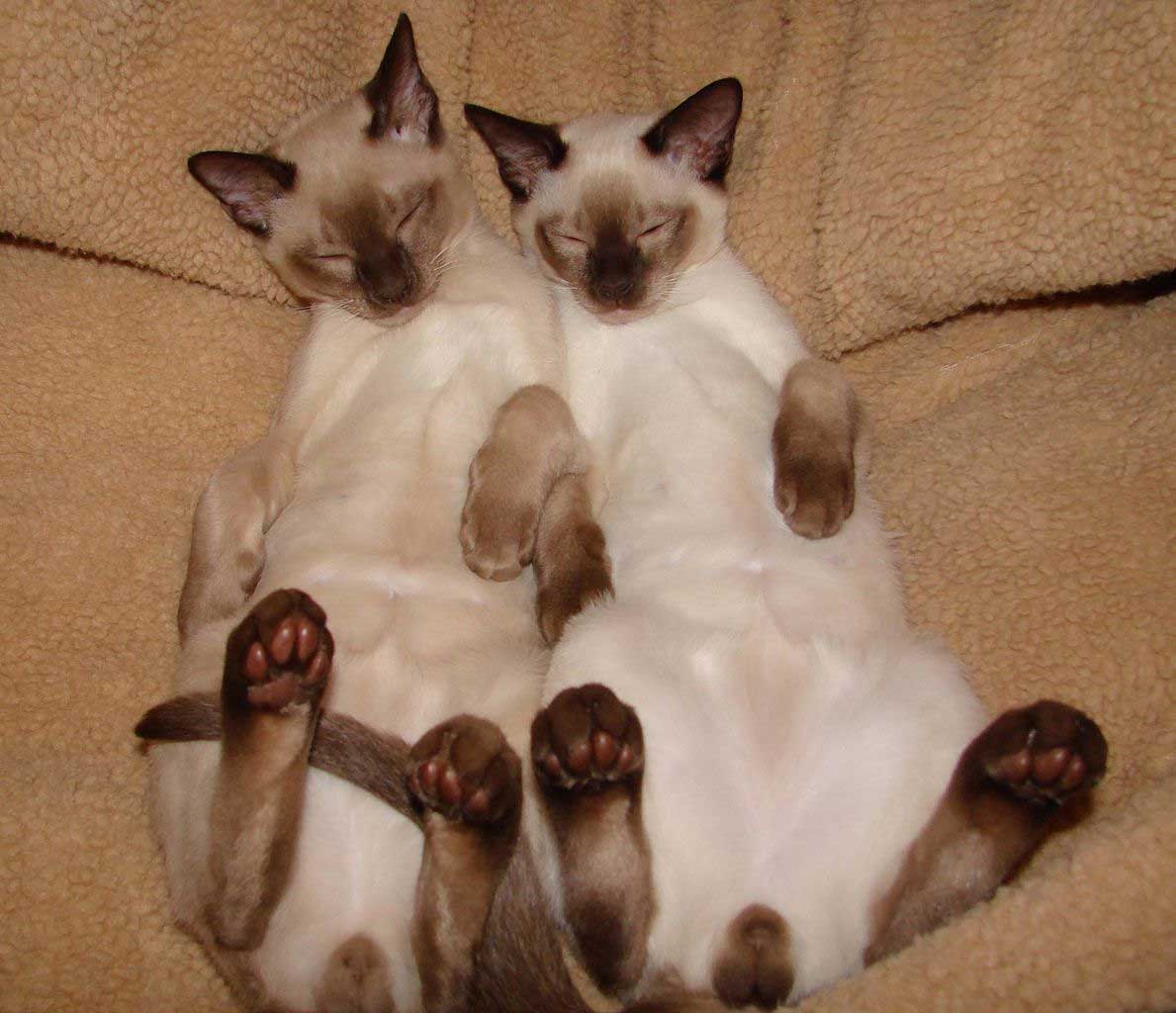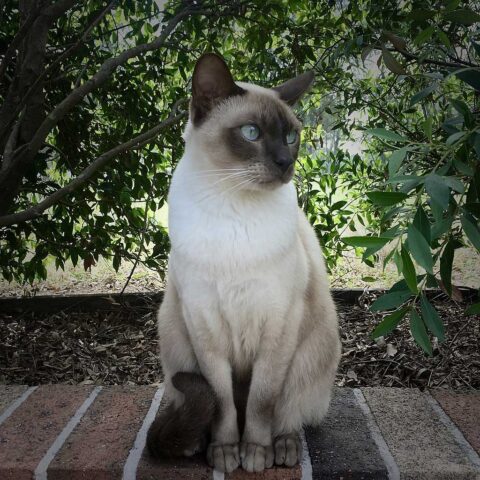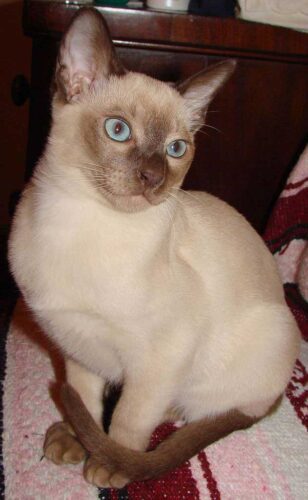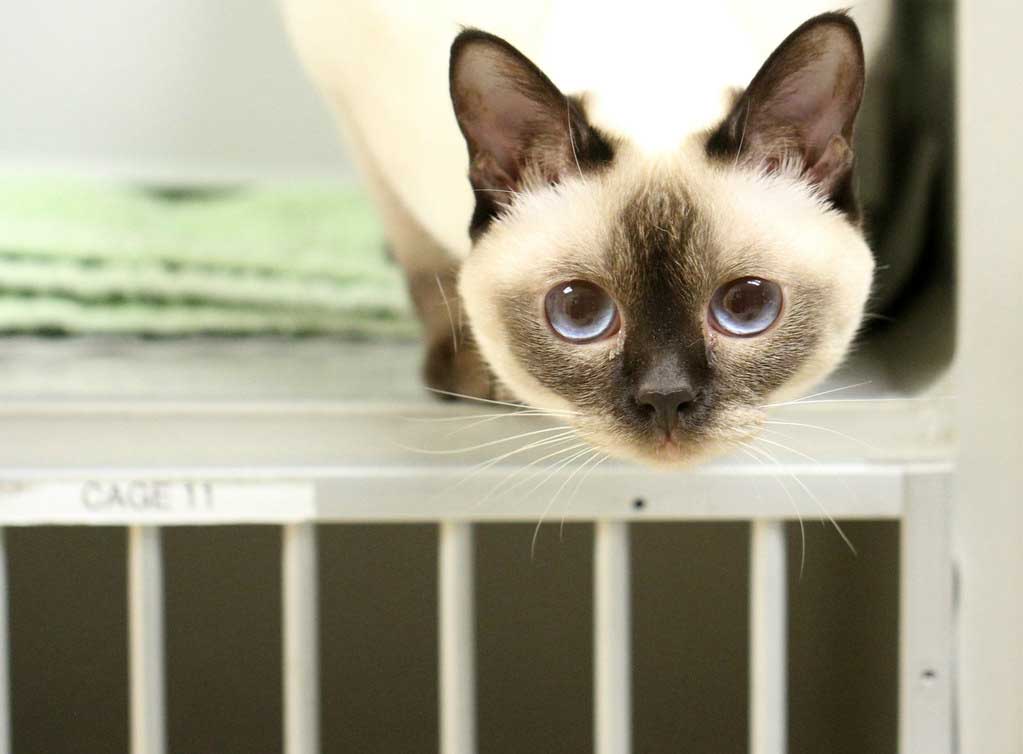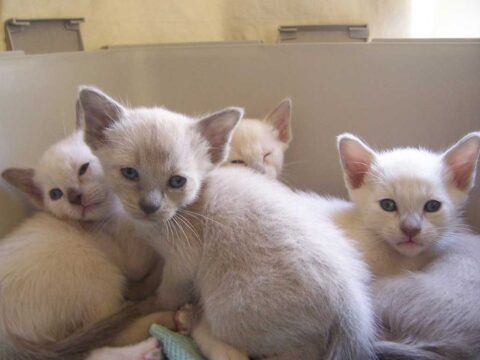Content |
|---|
History
The Chantilly He is originally from the United States. His story began when, in 1967, a breeder from New York, Jennie Robinson, came across some pretty unusual items at a yard sale: two cats of an unknown breed whose owner had recently died. I buy them, motivated by the desire to save them from a worse fate.
The two animals had semi-long chocolate-colored hair and golden eyes.. They were very similar, which led Mrs. Robinson to assume that they had at least one parent in common. Estimated Thomas's age, the male, in a few 18 months and that of the female, Shirley, in a few 6 months. Neither of us was neutered.
In May of 1969, Thomas and Shirley had their first litter of 6 kittens. Like his parents, the kittens were all smooth, with a medium chocolate-colored coat and pink pads on the legs.
Jennie Robinson realized that these cats did not belong to any recognized breed.. They seemed beautiful and decided to start a breeding program. He also promoted them, showing Thomas and some of the kittens at various cat shows in the New York area in the early years 70.
In 1970, the American Cat Association (ACA) agreed to register Thomas, Shirley and her offspring as Sable Foreign Longhair.
The first litter was followed by many more, so that in just 7 years the Neotype kennel (Jennie Robinson's name for her kennel) saw the birth of some 60 kittens. Other Connecticut and Long Island breeders became interested in the new breed and bought some of the kittens, which in turn were exhibited in exhibitions.
Many professionals were convinced that the Sable Foreign Longhair He was a descendant of the Burmese cat. More concretely, they thought it was just the long-haired version. This confusion continued for many years and was later expanded.
In fact, in the mid 70, Jennie Robinson gave up breeding him Sable Foreign Longhair. He sold the cats he still owned to a Florida breeder, Sigyn Lun, which in turn started a breeding program. This breeder basically bred burmese cats, which contributed to the belief that the Sable Foreign Longhair was a Long Haired Burmese cat.
But, in some of the exhibitions in which these cats were shown, the judges commented that the name was too vague to designate a breed. Sigyn Lun decided to call them Tiffanie in reference to the eponymous theater in Los Angeles, a symbol of luxury and glamor for her. In fact, considered the cat to be the very embodiment of elegance and grace.
But, how the cat had become too weird, the ACA stopped accepting your registration.
In 1979, the International Cat Association (TICA) recognized the Burmese and formed a group with him Burmese and the Tiffanie, which was recognized at the same time. In other words, even a major international feline organization was convinced that the second was simply a long-haired equivalent of the first.
At the beginning of the Decade of 1980, Sygin Lun decided to stop raising the cat Tiffanie, that was on the verge of extinction. But a Canadian breeder probably saved the breed…
A salvation from Canada
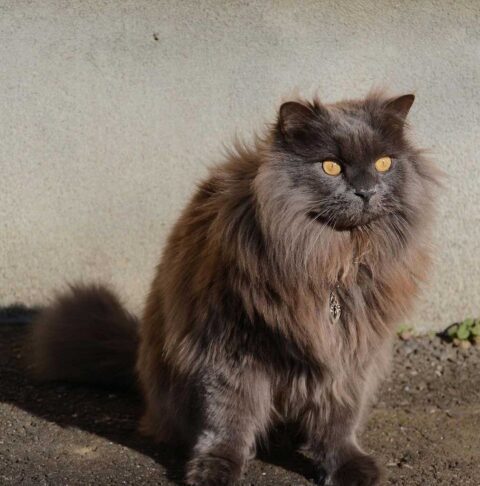
The second life of the Chantilly-Tiffany Cat started in canada, more specifically in the province of Alberta, When in 1973 a chocolate-colored cat with golden eyes came to give birth on a farm. She gave birth to a litter of kittens, all of them chocolate-colored and similar to Tiffanie. The farm was owned by a breeder, Tracy Oraas, who decided to start raising cats after falling in love with their grace and beauty.
Before embarking on this new project, and noting the similarities with the Burmese cats, tried to establish if there was any link, and got in touch with Jennie Robinson and Sygin Lun. Based on your research and the information provided to you, concluded that Tiffanie They had no relationship with the Burmese cats.
He teamed up with a Siamese breeder friend, Jan de Regt, to create a breeding program. They decided to cross the Tiffanie with the Angora cat, the Havana Brown cat Brown, the Somali cat and the Nebelung cat. In effect, given the small population of the breed, These marriages made it possible to expand the gene pool and, Therefore, develop it in the best conditions, reducing the risks of inbreeding. They also offered the possibility of diversifying the range of coat colors, since thanks to them the cinnamon colors were added, leonado, lilac and blue.
Since the beginning of the years 80, other breeders joined the program. The exchanges between all these enthusiasts allowed the Chantilly progress slowly but surely in Canada.
But, just when the information about the Chantilly it was finally clearing up, since it was no longer confused with the Burmese, in 1992 Canadian breeders were asked to choose another name. The name “Tiffany” used in Great Britain to refer to a new developing breed. Although the spelling was not exactly the same, it was confusing. Tracy Oraas decided to change the name of Tiffanie for that of Chantilly to keep the idea of ​​elegance and refinement, while remembering the idea of ​​a floaty coat.
The cat regained importance in the United States in 2001, when an Illinois foodie, Anne Davenport-Parini, founded the Amorino kennel. Hershey Nugget, a handsome chocolate-colored male, he was the father of the first generation of kittens. Also in this case several matings with representatives of other races were necessary.. It's about him brown havana (for its beautiful chocolate color), The somali (for his thicker fur in his pants, the gola and the tail), the Abyssinian (origin of the somali) and, finally, the Nebelung (by the length and texture of its fur).
In 2012, the hatchery was completely destroyed by a fire. One of the surviving cats, Frosty, was purchased by a Norwegian Nebelung breeder, Norma Hubenbecker. Norma Hubenbecker tried to start a breeding program for the Chantilly, but his attempt was unsuccessful. Frosty only sired a puppy, called Acey. In 2015, Frosty died of cancer and the breeder castrated Acey, ending the experiment.
In fact, it seems that the Chantilly-Tiffany cat he wasn't exactly born under a lucky star: from its inception to today, its history has been full of pitfalls and confusion, which has inevitably greatly limited its growth.
Today, there are less than twenty breeders (concentrated in Canada and the United States) who are dedicated to the breed and give all their energy to try to develop and perpetuate it.
Chantilly recognition
The Chantilly-Tiffany Cat has only existed for a few 50 years, and has struggled to gain recognition compared to other recent cat breeds that have quickly achieved success.
Since 1967, the beginning of its history, his path has been complicated and has been strewn with pitfalls, which obviously did not facilitate its recognition by the different recalcitrant official bodies. In addition to the various twists, the latter also noted the successive name changes, which obviously didn't help things.
However, the International Cat Association (TICA) granted recognition in 1979, at the same time as Burmese: formed a group composed of these two races, considering that one was the long-haired version of the other. But, realizing that this was not really the case and that the population of Tiffanie didn't really take off, in 1992 backtracked on acknowledging the latter.
Two years later, in 1994, TICA accepted it again, this time as a different race and with the name of Chantilly… before changing my mind shortly after.
In the year 2000, another change: the organization recognized him Chantilly as an experimental breed. This allowed their representatives to appear in the halls organized under the auspices of the organization., without entering competition. A few years later, the breed suffered another setback: while admission as an experimental breed is usually the prelude to full recognition, the association simply stopped recognizing the Chantilly, due to lack of enough specimens.
The Canadian Cat Association (CCA) accepted the Chantilly as an experimental breed in 1992, and granted him full recognition in 1996. But, observing that its population did not increase -and even decreased-, downgraded her to the rank of experimental breed in 2011.
Either internationally or nationally, other important feline organizations such as the Fédération Internationale Féline (FIFé), the American Cat Fanciers’ Association (CFA), the British Governing Council of the Cat Fancy (GCCF) or the Livre Officiel des Origines Félines (LOOF) they don't recognize the Chantilly.
Like this, more than half a century after the creation of this breed, almost everything remains to be done in terms of recognition.
Physical characteristics
The Chantilly-Tiffany cat It is of medium size and semi-linear type.
- Its body it is rectangular in shape with a flat back and a rounded rump. His moderate musculature is based on a medium bone structure.
- The tail is proportional to the length of the body. Tapers from base to tip and has a coat of feathers.
- The legs they are of equal length in front and behind. They end in oval feet.
- The head it is medium in size and harmonious in outline, resting on a rather short and thick neck. The skull is rounded and the forehead a little flattened. The profile shows a slight stop just below the eyes.
- The ears they are widely spaced and medium in size, slightly angled outwards and forwards. Wide at the base, tapers to a rounded tip. The breed standard states that it is desirable that they have hair on the inside.
- The eyes they are also widely separated and oval in shape. Its color ranges from dark yellow, gold and amber. In any case, it is preferable that it is as intense as possible, and a green ring is accepted around the pupil. The upper lash line is straight, while the lower one is rounded.
- The cheeks they are tall and prominent.
- The nose it is moderately long and ends in a broad muzzle, short and square. Whisker pads are flat. The complexion is dominated by wide jaws and a slightly prominent chin..
- This cat has no undercoat, but it is distinguished by its semi-long coat, silky, light and very soft. This is what gives this animal its elegance, since its coat is reminiscent of an airy and vaporous whipped cream.
Should have 5 cm length, but it can be a bit longer as long as the texture remains light and silky. In any case, up to two years of age this cat does not have its final coat. The fur appears first on the tail and then on the rest of the body. The male has a fuller ruff and a heavier coat than the female.. Regardless of gender, the hair on the hind legs is similar to that of the feathers, forming a small petticoat on the legs.
Originally, the Chantilly-Tiffany cat appeared with a chocolate brown fur, which is still the most popular today. But, crosses with the Angora Cat, the Oriental, the havana, the Nebelung and the Somali have expanded the range of colors. There's also Chantilly black, blue, cinnamon, tawny and lilac. The coat patterns are also more varied: may be agouti, stained or tabby.
In all cases, the color should be bright and deep. But, lighter shades of brindle on throat and muzzle are acceptable.
Last, there is true sexual dimorphism in this breed, since the male is bigger and heavier than the female.
Size and weight
Varieties:
The Canadian Cat Association (CCA) is the only official body that recognizes the Chantilly, with experimental character, by the way. Allows crosses with the following breeds:
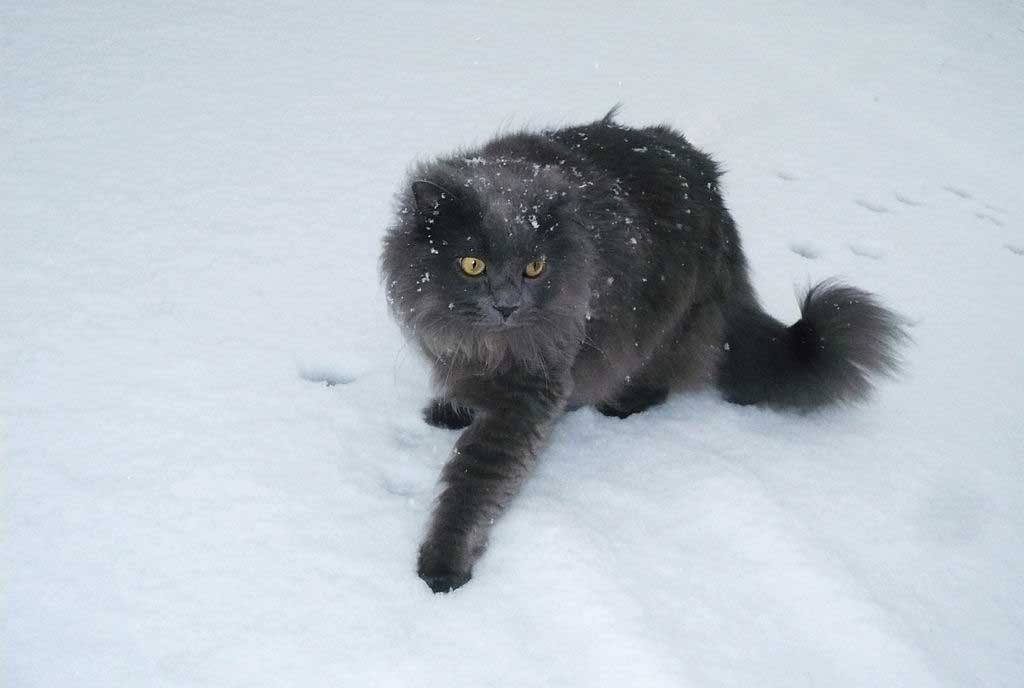
Character and skills
The Chantilly-Tiffany cat it is an ideal cat for a family, since its balanced character makes it adorable and easy to live with.
He is especially attached to the person he considers his teacher. Devoted and faithful, follows her everywhere and scrutinizes her every move at all times. It can also be perfectly placid, for example, snuggling into or against your lap for hours, or inviting himself to her bed. He likes to be caressed and gives all the attention he receives, but it is clear that it is not for someone who does not want a partner “sticky”.
Although they have a very strong relationship with their owner, this cat has a broader love for all humans in the home, and you need your company to be happy. This makes it an excellent companion for the whole family., since it is the type of cat that establishes a good relationship with each member of the family. He will be happy to play with them or to seek pampering.
Playing is also a favorite activity, making it an excellent entertainment companion for children. You just have to make sure children treat you with respect, like any other cat. In any case, for the good of both parties, a young child should never be left alone with a cat without adult supervision, regardless of race.
Very comfortable in your family environment, the Chantilly-Tiffany cat It, on the other hand, much more reserved with strangers. Without being fearful, prefers to stay away when strangers enter its domain. A tree for cats, essential for every small cat, it is an ideal place to take refuge on those occasions.
The fact that this cat loves the company of its humans goes hand in hand with the fact that it does not like to be alone.. Obviously, not recommended for owners who are away for long periods of time. In fact, if left alone for hours, quickly becomes anxious and melancholic. Leaving him toys cannot replace the presence of the people who usually surround him and allow him to flourish..
On the other hand, having him share his home with a small companion is an interesting option. In fact, tends to live easily with another cat, delighted as he is to share moments of play with him. Living under the same roof as a dog is usually not a problem, especially if it is a breed of dog that gets along well with cats. But, in either case, it is always preferable that the two of you join at a young age: then the other is considered a full member of the family from the beginning, and the relationship is much better for it. Otherwise, it is preferable to establish coexistence gradually, to minimize the risk of problems.
The Chantilly-Tiffany cat it can also live in the same house as birds or small rodents. They are quiet, peaceful and not aggressive. But, some caution must be exercised when the animal is outside: should be kept in a separate room or cage.
It also, Even if I'm not the hyperactive type, this cat is very playful and needs his little crazy moments. Providing a variety of interactive toys is a great way to satisfy their curiosity and develop their skills.. But, this does not mean that you do not have to play with your cat: he likes very much to interact with the people around him in this way.
As long as your need for entertainment is met and you have enough space to play, the Chantilly-Tiffany cat you can live both in a flat and in a house with a garden. On this last case, It is highly recommended to install a cat flap so that you can come and go as you please.
In any case, like any cat, must have an easily accessible scratching post. In effect, scratching is a compelling need that you cannot give up; without this accessory, would have no choice but to resort to furniture or curtains, for example.
Last, the Chantilly is known to be a very talkative cat. As he follows his master throughout the day and shares his activities, does not hesitate to tell you his life and give his opinion on everything. His way of communicating is, However, nice, since its meow is not very loud and is comparable to a screech.
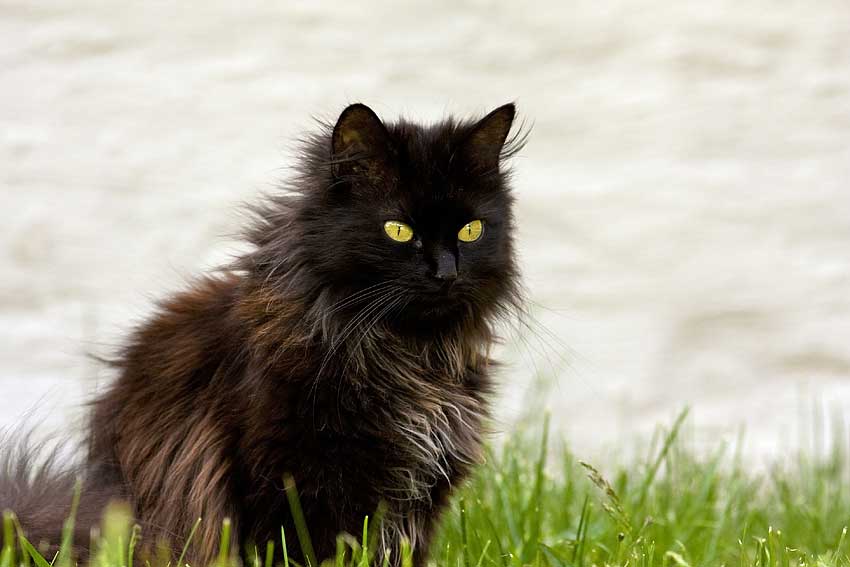
Health
Because the breed's population has always been very small, little is known about the health of Chantilly-Tiffany cat. But, appears to be in robust health.
It also, is able to adapt to all climates and, Therefore, to live in almost all latitudes. It is only important to ensure that you always have access to fresh water and a shady area during hot periods., and to a sheltered and warm place when the temperature is very low.
But, it is known to have a delicate digestion and is especially sensitive to cellulose, that decomposes with difficulty during assimilation and digests poorly. So, It is important not to hesitate to consult a veterinarian or a nutritionist to identify the most suitable food and, in any case, to avoid, for example, those based on corn, containing a large amount of cellulose.
It is also important that you always receive the same food, even if it is left in a cattery when its owners are away. In any case, even more than with other breeds, a change in the cat's diet (for example, for health reasons) requires a very gradual transition to the new food, so that the digestive system can gradually get used to the new food.
On the other hand, the Chantilly-Tiffany cat have an unfortunate tendency to be overweight or even obese, especially if you live indoors and, Therefore, are less likely to exercise. This problem should not be taken lightly, as excess weight can both aggravate existing diseases and cause new ones.
Ears of the Chantilly they also require special attention. In fact, the presence of hair makes it less able to clean itself in this area. Thus, wax and dirt can build up and lead to ear infections (for example, otitis).
As in the case of any race, turning to a serious breeder is the best way to adopt a healthy and well-endowed kitten. In effect, a professional worthy of the name spares no effort to socialize the little ones from a very young age and make them grow up in an ideal environment. In any case, at the time of sale, must be able to present a certificate of good health issued by a veterinarian, as well as the list of vaccines applied to the animal, registered in the health or vaccination card of this.
Once the adoption is done, it is the responsibility of the new owner to take care of the health of his little companion while he is alive. Taking the cat to the vet at least once a year is one of the golden rules to keep it healthy. In fact, this not only allows the administration of the necessary booster vaccines, but also a complete health check of the animal, which sometimes makes it possible to detect a possible problem and treat it in the best conditions. It also, do not hesitate to increase the frequency as the cat grows.
Continuing with the theme of prevention, the owner must ensure that his partner's antiparasitic treatments are regularly renewed, so that you are continuously protected. This applies even to cats that do not have access to the outdoors.: even if the risk is lower, are still exposed to certain parasites.
Life expectancy
14 to 16 years

Grooming
The Chantilly-Tiffany cat has no undercoat and sheds very little. On the other hand, their fluffy, silky fur tangles easily. Brushing every other day not only removes dead hair, it also avoids tangles, allowing the dog to maintain its appearance. During their shedding periods, in autumn and spring, it is even preferable to brush daily.
It is also essential to check your ears once a week. This is because the tufts of hair at the entrance of the ears make it difficult to clean the dog and, Therefore, facilitate the accumulation of earwax and dirt. If cleaned with a damp cloth, impurities that may become infected will be removed.
This weekly grooming session should be used to check the eyes. If they are dirty, wiping the corners of the eyes with a damp cloth is necessary to remove dirt and prevent infection.
The maintenance of a cat's teeth is also very important, whatever the race. This is because it helps prevent plaque build-up., which can cause more or less serious diseases when it becomes tartar. So, you should brush your pet's teeth at least once a week, but the ideal is to do it daily. In any case, it is essential to use a toothpaste specially designed for felines
Whether your cat lives exclusively indoors or has access to the outdoors, it is also essential to inspect your nails once a month. If the natural wear and tear is not enough and they become too long, must be trimmed manually. This will prevent them from getting in the way or even breaking and / or injuring the dog. But, It should be noted that caring for your cat's nails does not mean you don't have to provide a scratching post. If you don't, You shouldn't be surprised if your cat falls on furniture or curtains..
coat care, the ears, the eyes, the teeth and claws of his Chantilly-Tiffany cat does not require any special skills. But, it is a good idea to learn from a cat groomer or vet the first time, so you can learn the right techniques and then do it yourself. In this way, better results are achieved and the risk of injuring or even traumatizing the animal is reduced..
As long as the owner does it correctly and does not hesitate to add caresses, the grooming sessions of the Chantilly-Tiffany cat will become privileged moments between the two protagonists. In fact, by liking the proximity of its owner, delighted that they pay attention to him and even more that they caress him, you probably appreciate it. It is common for him to let you know with sweet little meows.
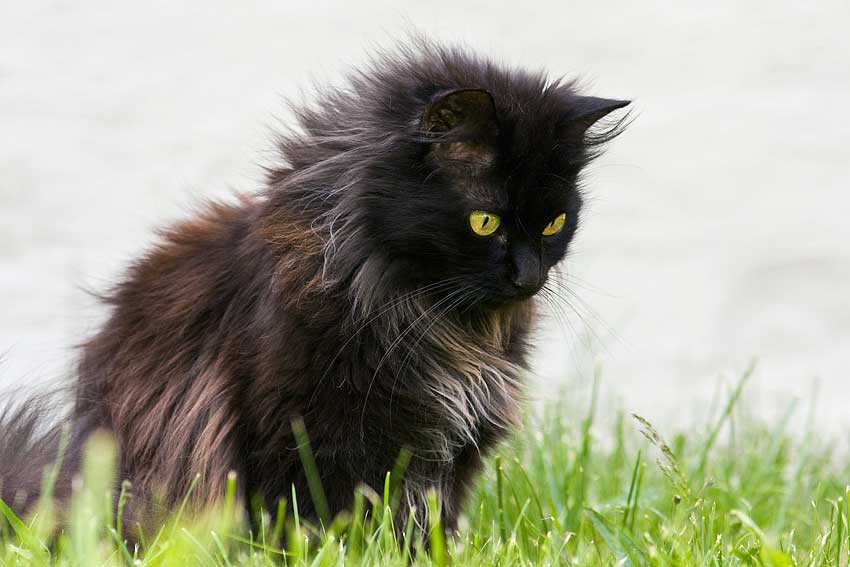
Food
Like any cat, the Chantilly-Tiffany cat you need a diet that matches your nutritional needs, both qualitatively and quantitatively. As such, must suit your age, your level of physical activity and your health status.
In any case, the tendency to be overweight - and even obese- forces you to carefully define your daily food intake. It also, unlike most of his peers, has difficulty regulating himself, so it is better to avoid giving free access to food, since it is likely that he will binge and eat the entire ration for the day in a few minutes. Fixed meal times are a much better solution.
Industrial cat foods are suitable, as long as they are of good quality. But, the choice should not be made at random, since your cat has a delicate digestion. In particular, avoid corn-based products, since they contain a lot of cellulose, which is difficult for the cat's body to digest. Ideally, seek the help of a veterinarian or feline nutrition specialist to identify the most appropriate.
In any case, once you have found a suitable product, it is best to avoid changing it, unless, Of course, that your health justifies it. This is true of any cat, but even more so for cats whose digestive system has a harder time adjusting to a change in diet.
Unless carefully selected, human food is not made for cats: is unlikely to meet your nutritional needs and, on the other hand, it can be a source of deficiencies or excesses. It also, in the case of Chantilly-Tiffany cat, there is also the problem of its digestion capacity. Like this, give small pieces during the meal, table scraps at the end of the table or letting him rummage through the trash is not a gift to keep him healthy. Some foods that are popular with humans are even toxic to cats.
Your propensity for obesity also means you have to control your weight by weighing it every month. If successive weighings indicate that your cat is getting fat, it is important to take him to the vet. Only a healthcare professional can reliably diagnose the cause of the problem, which may be a feeding problem, but also a disease or a reaction to medication.
Last, like any cat, the Chantilly-Tiffany cat you must have fresh water at all times.
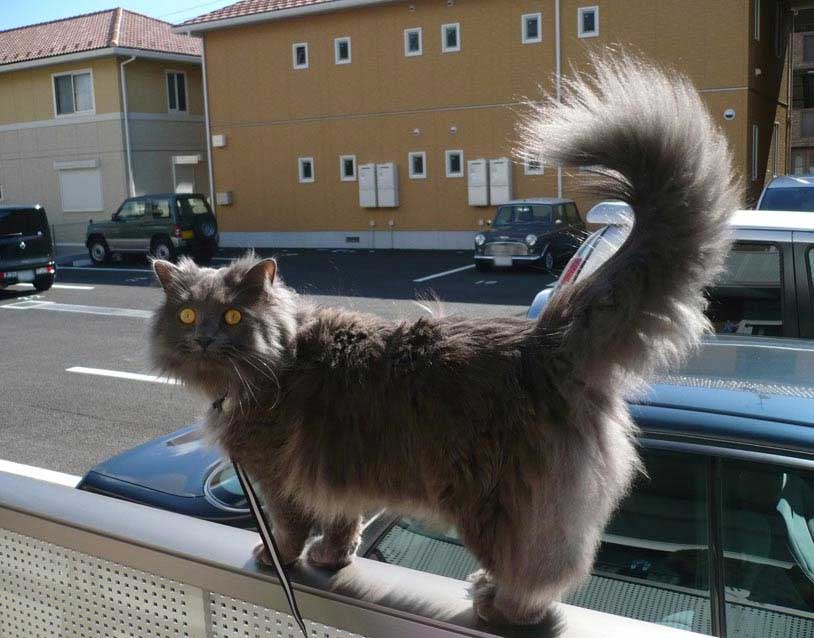
For sale “Chantilly-Tiffany cat”
The Chantilly-Tiffany cat it is one of the rarest cat breeds in the world, and it is almost impossible to find one outside the United States or Canada. Even in these countries, you have to be prepared to sometimes wait for many months and / or travel long distances to be able to adopt a cat of this breed.
in Canada, there are very few breeders and they usually sell their kittens between 500 and 800 canadian dollars.
One solution is to look at the United States, where there are just under a dozen breeders. The price of a Chantilly-Tiffany cat usually oscillates between 300 and 600 USD.
In the case of an adoption abroad, must take into account, However, that transport costs and administrative costs are added to the purchase price. It is also necessary to know and comply with the legislation regarding the importation of animals.
whatever the country, the asking price depends on the reputation of the breeding, from the line from which the animal descends and, above all, its intrinsic characteristics, especially the physical ones. For this reason, quantity can vary within a litter.
Characteristics "Chantilly-Tiffany cat"
Coexistence is important that you have with your new friend. Before considering the acquisition of a cat of the breed "Chantilly-Tiffany cat" you know certain factors. You must take into account their character, their need for exercise, their interaction with other pets, their care and if you have small children, their level of tolerance towards them.
Joy5.0 out of 5 stars (based on 1 review)
|
Activity level4.0 out of 5 stars (based on 1 review)
|
Friendliness to other pets4.0 out of 5 stars (based on 1 review)
|
|---|---|---|
Friendliness to children4.0 out of 5 stars (based on 1 review)
|
Grooming requirements2.0 out of 5 stars (based on 1 review)
|
Vocality2.0 out of 5 stars (based on 1 review)
|
Need for attention4.0 out of 5 stars (based on 1 review)
|
Affection towards its owners4.0 out of 5 stars (based on 1 review)
|
Docility3.0 out of 5 stars (based on 1 review)
|
Intelligence4.0 out of 5 stars (based on 1 review)
|
Independence2.0 out of 5 stars (based on 1 review)
|
Hardiness4.0 out of 5 stars (based on 1 review)
|
Videos "Chantilly-Tiffany cat"
|
Chantilly | Cats 101
|
Rosco the Chirping Chantilly Cat!
|
|---|
